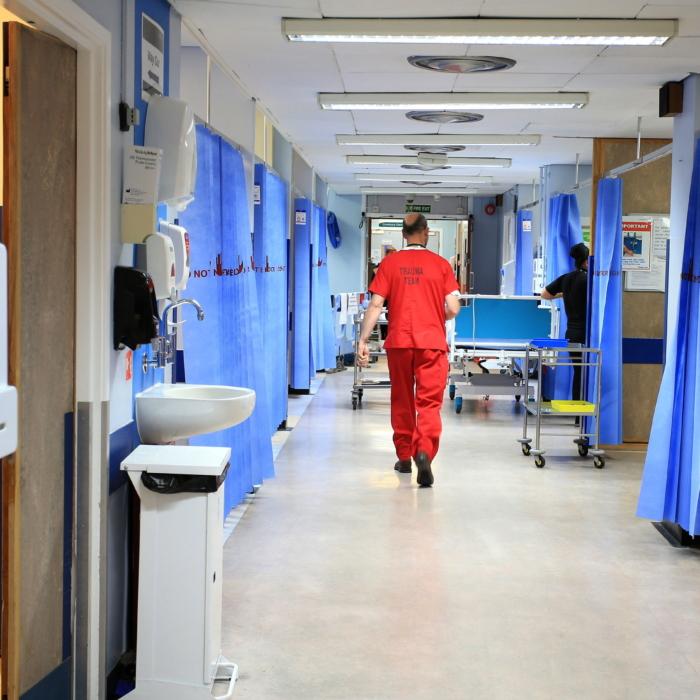More than 2,000 NHS hospital buildings in England predate 1948, making them older than the health service itself, analysis by the Liberal Democrats has revealed.
Analysis of NHS Digital data by the Lib Dems found 34 out of 211 NHS trusts in England had at least one in four buildings which were built before 1948. The party also found that around 30 trusts had no buildings which predated that year.
The party’s health and social care spokeswoman Daisy Cooper described the situation as a “national scandal,” warning there were millions of people being “treated in old and crumbling hospitals that are no longer fit for purpose.”
“Patients and staff deserve the dignity of safe, modern, and clean hospitals,” Ms, Cooper said.
Sewage Leaking From Sinks
Issues reported in older NHS buildings included sewage leaking from sinks onto the floors of wards when it rained. One hospital was using its intensive care unit as a storage room because it had been deemed unsafe for patients.NHS Providers, a membership organisation representing NHS trusts, said buildings and equipment are “in a very bad way” and the situation is getting worse every year.
Deputy Chief Executive of NHS Providers Saffron Cordery said: “The safety of patients and staff is at risk. NHS trusts have an £11 billion-plus list of essential repairs waiting to be done and the backlog is mounting at an alarming rate.”
Ms. Cordery said the “eye-watering cost of trying to keep creaking buildings and out-of-date facilities going is soaring,” and called for more money to be put into the health service.
The New Hospital Programme
In response to the analysis, a Department of Health and Social Care (DHSC) spokesperson said, “We’re investing record sums to upgrade and modernise NHS buildings, with £4.2 billion invested last year alone, which has helped us achieve the biggest five-month fall in waiting lists in the past 10 years.”“This is on top of expected investment of over £20 billion for the New Hospital Programme [NHP]—with four hospitals already open and another four due to follow this financial year and a further £1.7 billion for more than 70 hospital upgrades,” the spokesperson added.
In 2020, the government announced the NHP, which would see 40 new hospitals being built by 2030.
However, the National Audit Office (NAO) published a report in July saying the initiative was facing delays.
“By the definition the government used in 2020, it will not now deliver 40 new hospitals by 2030,” the NAO said, adding delivery had been slower than expected.
18,000 Pest Problems
The analysis into Britain’s ageing NHS estate comes after a Freedom of Information request by the Liberal Democrats revealed there had been 18,000 reports of pest problems at NHS hospitals in England in the last three years.Among the reports were of rats in maternity wards, wasp nests in imaging areas, cockroaches on wards, ants “coming through the ceiling,” and rodents in a kitchen.
Other reports mentioned maggots in the mortuary. Another hospital said staff found rat faeces in a body bag.
NHS Receives Billions in Spring Budget
In March’s budget, Chancellor of the Exchequer Jeremy Hunt announced the NHS in England would receive a £2.5 billion day-to-day funding boost for fiscal year 2024/25.The NHS will also receive £3.4 billion in capital investment. The chancellor said this would double investment in “digital transformation, significantly reducing the 13 million hours lost by doctors every year because of old IT and delivering test results faster for 130,000 patients a year thanks to AI-fitted MRI scanners that help doctors read results more quickly and accurately.”
The Health Foundation, an independent charity and think tank, said in a report published last month that in 2022/23, total health spending in England was £182 billion, having increased by an average of 5.5 percent a year in real terms since 2019/20.
Planned total health spending will increase to £192 billion this fiscal year, but The Health Foundation noted that owing to inflation, “this would equate to a small increase of 0.6% in real terms” compared with the previous financial year.
According to government guidance on public spending, the largest taxpayer expense is health care, at 19.8 percent of a person’s income tax, followed by welfare (19.6 percent) and national debt interest (12.0 percent).







